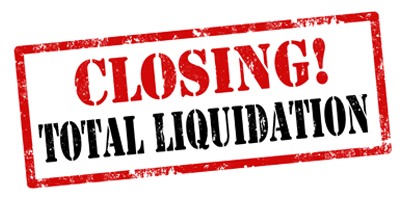Getting The Company Liquidation To Work
Getting The Company Liquidation To Work
Blog Article
All about Company Liquidation
Table of ContentsSee This Report about Company LiquidationCompany Liquidation Can Be Fun For AnyoneSome Of Company LiquidationThe Single Strategy To Use For Company LiquidationAll about Company Liquidation
A liquidator is especially appointed to manage the winding up of a business's affairs in order for it to be folded generally when the business is going bankrupt. The liquidator is an unbiased 3rd party that manages the sale of firm possessions in order to pay off any kind of arrearages.Their duty includes, but is not limited to: Neutral Overseer: A liquidator is entrusted with serving as a neutral 3rd party to look after the whole company liquidation process. Produce Declaration of Matters: Liquidators must create a detailed declaration of events record. This record is dispersed to financial institutions, describing the present monetary status of the company at the time of its liquidation.
After the liquidation of a company, its presence is eliminated from Business Home and it ceases to be a legal entity. If directors navigated the procedure uncreative, there would certainly be no charges or personal responsibility for firm financial debts expected. Now, with a fresh start, directors can explore brand-new company opportunities, though professional examination is advisable.
What Does Company Liquidation Mean?
If more than 90% of all firm shareholders agree, liquidation can take place on brief notification within 7 days, the minimal legal notification for creditors. Nevertheless, normally, the bigger the liquidation and the even more possessions and resources the company has, the longer the procedure will certainly take. 'Do I need to pay to liquidate my company?', the response will depend on whether or not your service has any type of properties remaining when selling off.

We recognize that no 2 firms are the very same, which is why we will take the time to learn more about your organization so we can recommend the ideal course of activity for you. We only function in your best rate of interests, so you can be completely certain in the solution we supply.
A Biased View of Company Liquidation
In the UK, there is a set procedure to shutting down or reorganizing a minimal company, whether it is solvent or insolvent. This procedure is called liquidation and can only be dealt with by a certified insolvency practitioner (IP) based on the Bankruptcy Act 1986. There are four major sorts of company liquidation procedure: Creditors' Volunteer Liquidation (CVL); Mandatory liquidation; Administration; and Participants' Voluntary Liquidation (MVL).

In these conditions, it is necessary that the company ceases trading; if the company remains to trade, the directors might be held personally responsible and it might lead to the bankruptcy practitioner reporting wrongful trading, recognized as misfeasance, which might cause lawsuit. The supervisors appoint an insolvency practitioner and once this has actually been concurred and validated, there is a conference with the investors.
Certainly, if there are no investors, this step of the process is not required (Company Liquidation). The IP takes control of the company and begins the business liquidation process. The directors are no longer click to read more associated with what occurs, including the sale of the business's assets. If the directors want any of the possessions, they can notify the IP.
Little Known Facts About Company Liquidation.
The primary distinction is that the company's financial institutions applied to the court for an ending up order which compels the bankrupt her response business into a liquidation process. For the most part, financial institutions take this activity as a last hotel due to the fact that they have not gotten repayment via various other kinds of negotiation. The court selects a bankruptcy expert, additionally recognized as a main receiver, to perform the compulsory company liquidation process.
This kind of business liquidation is not volunteer and directors' conduct is reported to the UK's Assistant of State once the liquidation process has actually been finished. Any kind of supervisor that falls short to comply with the IP or has actually been included in supervisor misconduct, or a fraudulent act, may result in significant consequences.
It is used as a method to secure the business from any type of lawful activity by its creditors. The supervisors of the business concur to check my source make normal payments to resolve their debts over a duration of time.
3 Easy Facts About Company Liquidation Explained
This provides the company with time to develop a plan moving forward to rescue the business and avoid liquidation. At this factor, directors hand control of the business over to the assigned manager. If a business is solvent however the supervisors and shareholders wish to close the company, a Members Voluntary Liquidation is the right choice.
The firm liquidation process is managed by a liquidator designated by the directors and investors of the firm and they have to authorize an affirmation that there are no financial institutions remaining. The liquidation procedure for an MVL resembles that of a CVL in that possessions are become aware but the earnings are dispersed to the directors and the shareholders of the company after the liquidator's charges have been paid.
Report this page